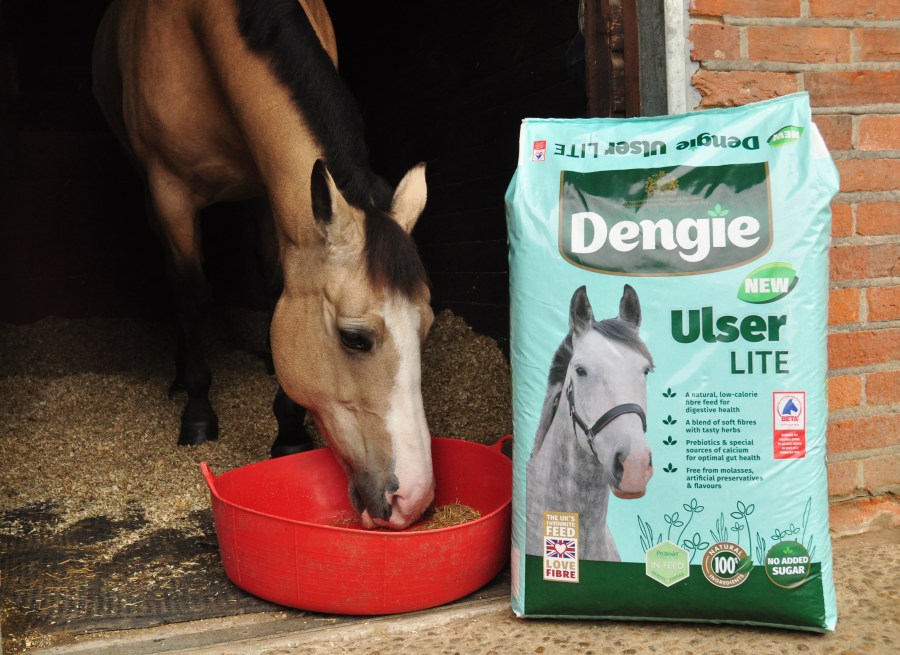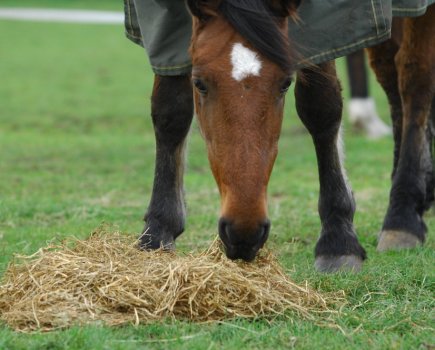Advertisement feature
Every experienced owner will know that forage in a horse’s diet and the fibre it provides are fundamental for behavioural and digestive health, including reducing the risk of equine gastric squamous disease (ulcers).
However, if you are the owner of a good doer or overweight horse it can be challenging to feed enough forage to satisfy their appetite without causing unwanted weight gain. So how do we maintain maximum intake for minimum calories, and keep our horses chewing and engaged in foraging activity for longer?
Maximising eating time
Here are our top tips for maximising a horse or pony’s forage intake and extending their eating time:
- At a minimum, all horses should have access to 1.5% of their current bodyweight on a dry matter basis daily.
- In a recent poll, 61% of horse owners asked didn’t weigh their conserved forage e.g. hay. If this applies to you, weighing your horse’s forage intake is a great place to begin in establishing whether your horse’s minimum forage requirements are being met.
- Using a less digestible fibre source will mean that you can feed more of it. Straw is a very low calorie fibre source.
- Providing your horse has good teeth and it is introduced gradually, straw can replace up to 50% of the usual forage ration to decrease energy intake whilst maximising chew time.
- Dividing forage up into multiple feeds through the day and using small-holed haynets, providing your horse doesn’t become overly frustrated with them, is also useful.
Fibre in the bucket
When it comes to bucket feeds for the ulcer-prone horse, many suitable feeds marketed towards them, such as those approved with the BETA feed approval mark for horses prone to Equine Gastric Ulcer Syndrome (EGUS), are higher calorie.
This can mean that good doers or overweight horses end up being fed very small amounts of a higher calorie feed which doesn’t maximise chew time.
Chew time is important, because it creates saliva, which is a natural buffer to the stomach acid that causes gastric ulcers in the squamous region of the stomach.
Dengie Ulser Lite is a lower calorie alternative. It combines chopped straw and grass with grass and alfalfa pellets and a light rapeseed oil coating.
Live yeast, prebiotics and postbiotics are added for ‘Tummy Loving Care’, with a blend of herbs added to enhance palatability.
At 8MJ/kg Digestible Energy, Dengie Ulser Lite is a lower energy fibre feed suitable for horses at rest or in light work that maintain their weight well.
Being low sugar and starch at 6.5% and 2% respectively, Ulser Lite is also suitable for those that are laminitis prone or prone to being excitable and can be used as a total forage replacer if required.
Larger quantities without the calories
Amber, a 16.1hh British Warmblood, had a history of gastric ulcers. Following a veterinary diagnosis, Amber’s owner Lydia changed her diet to include more turnout time and a higher calorie, ulcer-friendly bucket feed.
When a follow up endoscopy showed that Amber was now clear of ulcers, Lydia was delighted. However, she was concerned that the dietary changes had resulted in Amber, who is naturally a good doer, gaining weight.
Further to advice from a Dengie nutritionist, Lydia introduced Ulser Lite, as well as a vitamin and mineral supplement.
Amber was able to have a larger amount of Ulser Lite compared to her previous bucket feed, and the change means she spends more time chewing.
“It has been a big challenge to manage Amber’s weight as well as the ulcers, but with Dengie Ulser Lite I have found a happy medium,” said Lydia.
“Amber loves the Ulser Lite and it’s great that I can give her larger quantities without worrying about giving her too many calories.”









